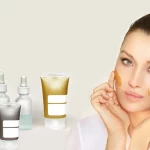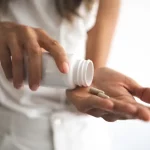
Varicose veins are enlarged and swollen veins that are dark purple or blue in color. They’re mostly present on a person’s legs. Varicose veins can be irregular, puffy, or curly in shape. In a healthy vein, the flow of blood is smooth towards the heart.
Several tiny valves will prevent the blood from flowing in a backward direction. If these valves are weak or damaged, then blood will flow backward and pool in the vein, transforming it into an enlarged or swollen affected vein.
There are easy ways to treat varicose veins. However, many people generally do not consider this condition as a serious health issue. They are mostly concerned with their unsightly appearance. However, left untreated, varicose veins can lead to rashes, infections, and blood clots.
More about Varicose Veins
Varicose veins are often surrounded by patches of tiny arteries known as spider veins. These veins can be painful but harmless, but when they get irritated, they become sensitive to the touch and can block circulation, causing swelling in ankles and immense pain in the skin.
Arteries have thick layers of muscle or elastic tissues to circulate oxygenated blood from our lungs to different body parts. Veins depend on surrounding muscles and a chain of one-way valves to push blood back to the heart. Blood flows via a vein, which is a cup-like valve, open to making blood flow possible and then close to prevent backflow.
Valves will not work properly in the case of varicose veins. Blood is allowed to pool in the vein, where it becomes difficult for muscles of the body to push the blood upward. Blood exerts great pressure on the vein, turning it into a puffy curled shape by continually flowing in a pool in the vein. As these veins have less space, and they cannot stretch, they are more vulnerable to become varicose.
Any condition that exerts frequent pressure on the legs or abdomen can lead to this chronic disease. Pregnancy, obesity, standing for long periods, chronic constipation, and tumors can cause this condition. Veins also weaken with age, leading older people to more commonly suffer from varicose veins. A previous leg injury may damage the valves in a vein, which can also result in this disease.
| Read also: The Basics of Varicose Veins and Their Treatment |
What are the Signs and Symptoms of Varicose Veins?
Symptoms associated with varicose veins are:
- Warmth, tenderness, and pain in the affected area,
- Redness and swelling,
- Prominent bright purple and blue vessels can be seen on the thigh, and
- Aching, soft, sore legs along with swelling in ankles.
Who is at Risk for Varicose Veins?
There are many factors that can increase the chances of developing varicose veins, such as:
- Pregnancy,
- Being overweight, and
- Old age.
Women are more vulnerable to this disease than men. Any vein in the body can be affected by this disease, but legs and feet are most common.
At-Home Ways to Reduce the Appearance of Varicose Veins
- Daily exercise – Daily exercise regulates the circulation of blood in the legs. Good blood circulation helps in pushing the blood that has pooled in the veins. Regular exercise helps in reducing an individual’s blood pressure, which contributes positively to this disease.
- Compression stockings – Compression stockings are readily available at many pharmacies. They are used to apply pressure on the legs. They help the muscles and veins to push blood more easily toward the heart.
- Dietary changes – Choose food that helps to lower water retention. A diet low in sodium and high in fiber is known to help. Such a diet includes leafy greens, nuts, potatoes, beans, and fish.
- Herbal remedies – The National Institute of Health has suggested grape seed extract for this chronic condition.
- Massage – Massage of the vulnerable area has a salutary effect because it helps blood circulation through arteries.
Know when to See a Varicose Vein Doctor for Treatment
Normally people do not consult a doctor immediately for varicose veins. But the following are the most severe conditions in which a patient has to see the doctor:
- If the skin over the affected vein is ulcerated, uncolored or bleeding,
- If the affected vein is red warm and soft, or
- If the affected vein is injured.
Varicose veins are ultimately caused by venous incompetence. There are different types of treatments in medicine for venous incompetence. Check out this treatment study for venous incompetence.
Laser treatment is when light energy coming from a laser is used on the varicose vein. This treatment causes it to fade or disappear. Multiple treatments or options are required in this technique. This procedure is usually used for treating small affected veins.
Sclerotherapy is another technique in which a chemical is injected into the vein. As a result, it will not be able to transport blood anymore, making a new path that is healthy.
Ablation is a method in which heat is used with the radiofrequency waves or lasers to destroy or close the affected vein. The Los Angeles Times, in an article, highlighted the steps taken for its cure.
Beware!
A varicose vein is not much complicated muscular disorder, but if it is not diagnosed and treated properly in time, it may turn into a severe or problematic circulatory disorder. Complete prevention from this disease is not possible, but one reduces the risk of developing this chronic disease by maintaining an appropriate lifestyle.
About The Author:
Rebecca Stuart is a part-time freelance writer and a full-time lover of healthy lifestyle living. She is passionate about fitness and spends her free time working out and finding new recipes to try.


![3 Breathing Techniques Which Relieve Anxiety [And The Science Behind Them] Breathing Techniques Which Relieve Anxiety](https://www.safeandhealthylife.com/wp-content/uploads/2021/09/Breathing-Techniques-Which-Relieve-Anxiety-150x150.jpg)

